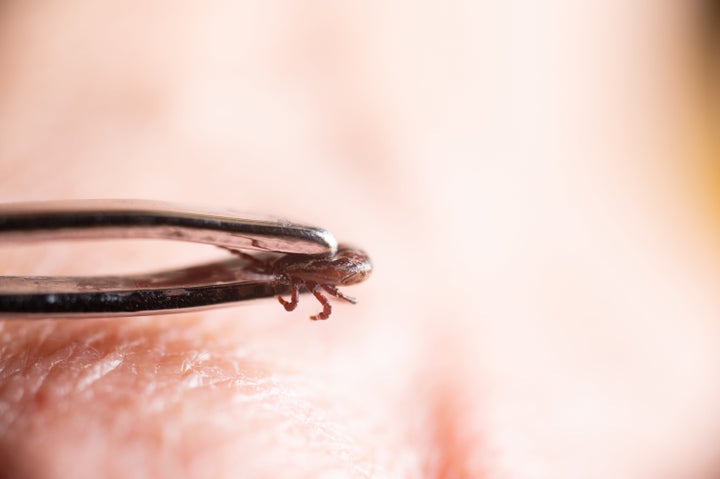
In news we definitely didn’t want to be writing today, tick-borne encephalitis is now likely to be present in England, according to health officials.
A new health report published by the government says the virus has been detected in multiple places across the country since 2019.
TBEV – or tick-borne encephalitis virus – is carried by ticks and common in many parts of the world, including many countries in Europe.
It causes a range of disease, from completely asymptomatic infection (meaning no symptoms at all), to mild flu-like illness, to severe infection in the central nervous system such as meningitis or encephalitis.
Where has it been detected?
At the moment it’s not particularly widespread and severe illness is still quite rare.
A joint report by the UKHSA and DEFRA said there have been three cases of probable or confirmed tick-borne encephalitis acquired in England since 2019, including one linked to the Yorkshire area in 2022.
The virus has also been detected in the Hampshire/Dorset and Norfolk areas but may also be present elsewhere as the tick species which carries the virus is widespread in the UK.
What is the risk to you?
Dr Meera Chand, deputy director at UKHSA, said: “Our surveillance suggests that tick borne encephalitis virus is very uncommon in the UK and that the risk to the general population is very low.”
That said, UKHSA has recommended changes to testing in hospital so that any further cases can be detected promptly.
It will also be enhancing surveillance generally – including asymptomatic surveillance in people in the Yorkshire area.
Keep an eye out for ticks after being outdoors
While instances of TBEV are still very rare, ticks can carry other diseases such as Lyme disease – a bacterial infection which can be treated with antibiotics.
With this in mind, UKHSA is reminding the public to check themselves for ticks after they have been outdoors – especially moorlands and woodlands where they thrive – and to remove them promptly and correctly if they are found.
Areas that ticks may frequently be found include skin folds, armpits, the groin and waistband area, as well as the back of the neck and hairline.
Data from UKHSA’s Tick Surveillance Scheme shows that adults are commonly bitten on the legs, whilst children are commonly bitten on the head or neck area.
Bites can occur on any part of the body and more than one tick can be attached at one time.
If you have pets, you should also check them for ticks regularly.
How to remove a tick
The safest way to remove a tick is to use a pair of fine-tipped tweezers or a tick removal tool.
Grasp the tick as close to the skin as possible and pull upwards slowly and firmly. Try not to squeeze the body of the tick as you grasp it.
Clean the bite area with antibacterial soap and water, and monitor it for several weeks for any changes.
Jean Tsao, an associate professor in Michigan State University’s Department of Fisheries and Wildlife, previously told HuffPost: “If the tick is infected, the longer it’s attached, the higher the probability that it will transmit the pathogen to you.”
So the sooner you remove the tick, the greater the chance you will prevent transmission.
“If small parts of the tick break off and remain in the skin — remove them if easily removed, but otherwise just leave it alone and the body will push it out over time,” she said.
To prevent tick-borne illnesses you can also use insect repellents and wear protective clothing when outdoors – particularly areas with long grass. This means tops with long sleeves and long trousers tucked into socks.
What are the signs of TBEV?
The illness often appears in two phases, according to the European Centre for Disease Prevention and Control. The first phase is associated with symptoms like fever, fatigue, headache, muscular ache and nausea.
The second phase involves the neurological system with symptoms of meningitis and/or encephalitis.
Official advice is that you should speak to your GP if you are unwell after a tick bite.
But you should seek urgent medical attention if you, or someone you know, experience any of the following symptoms after a tick bite:
- Severe headache
- Stiff neck
- Pain looking at bright lights
- Has a fit (seizure), if not known to be epileptic
- Sudden confusion or change in behaviour
- Weakness or loss of movement in arms and legs
- Facial dropping, change in vision or slurred speech